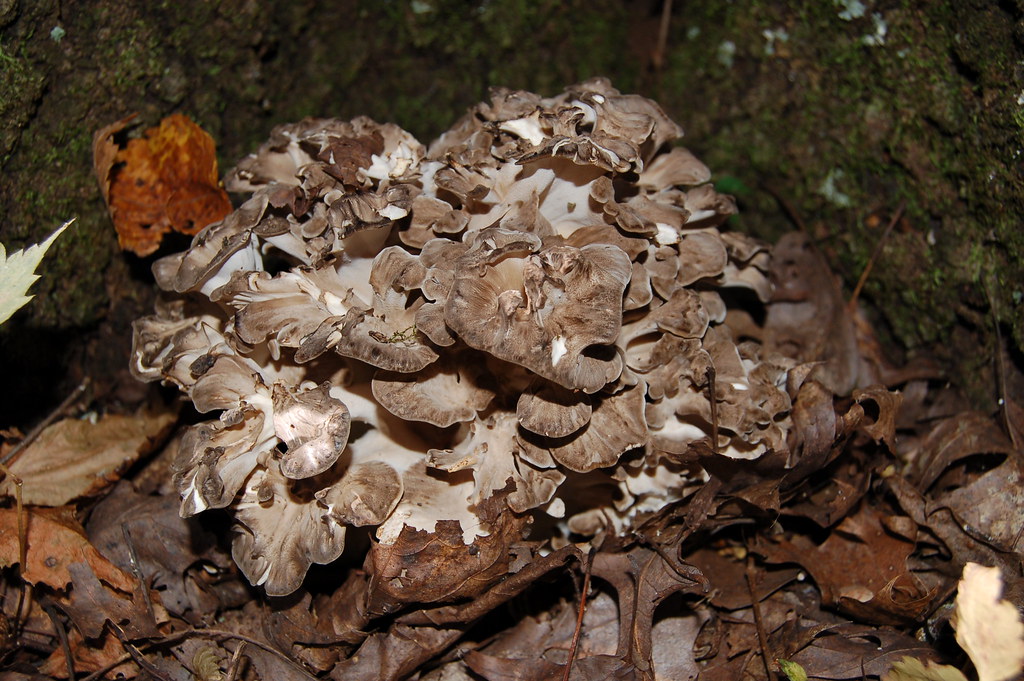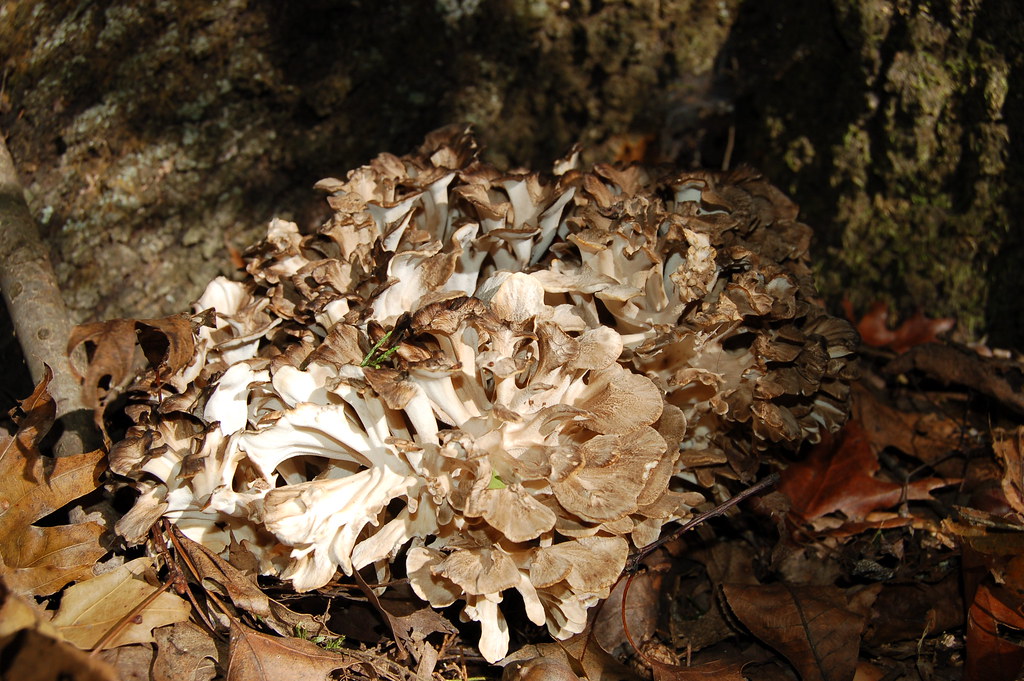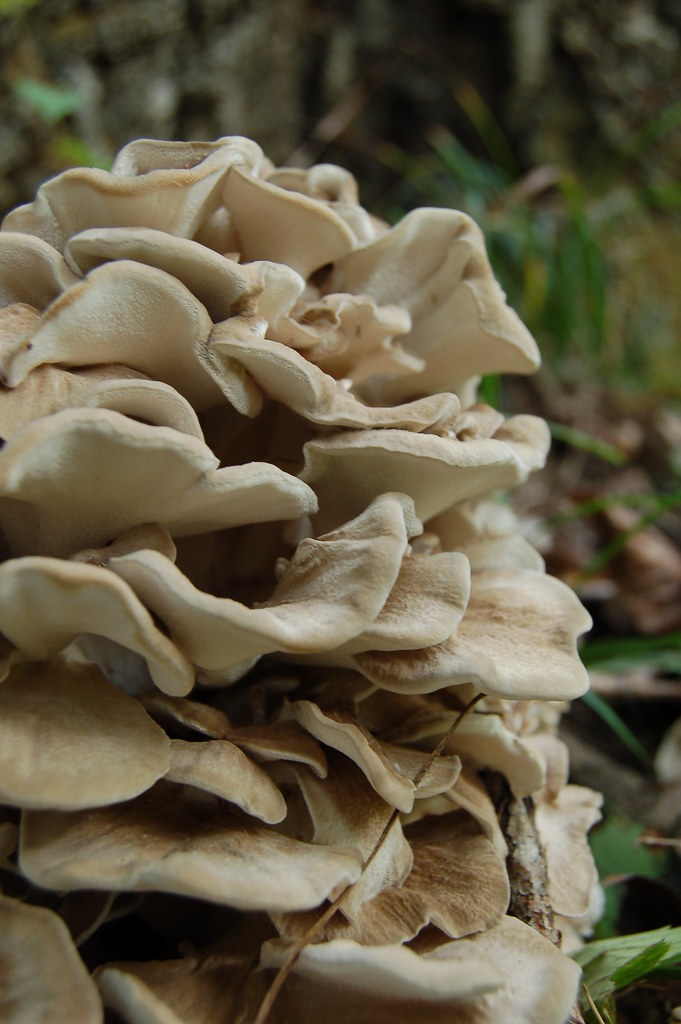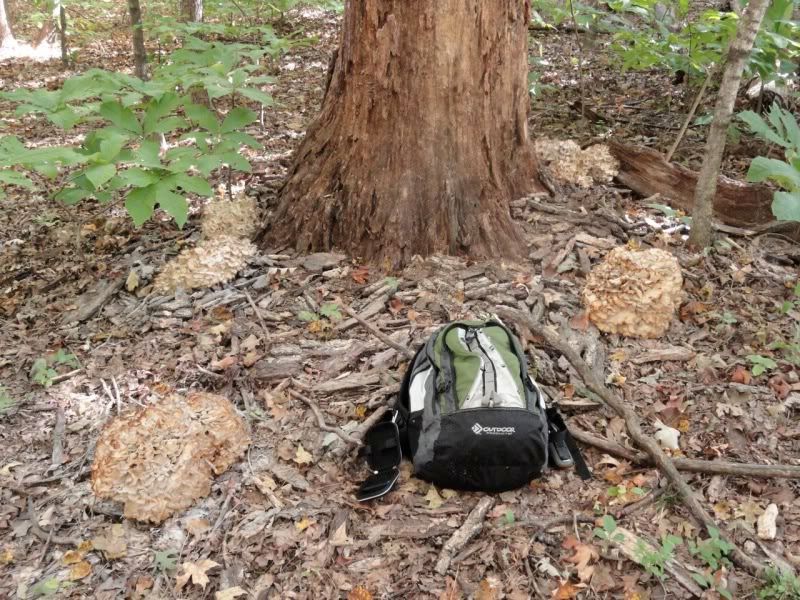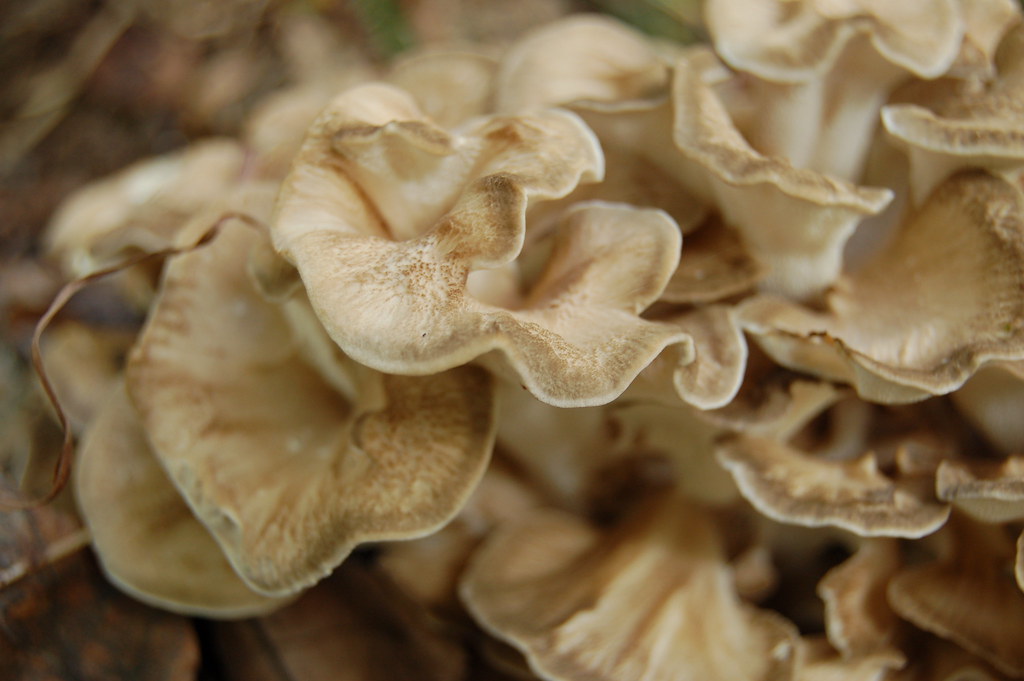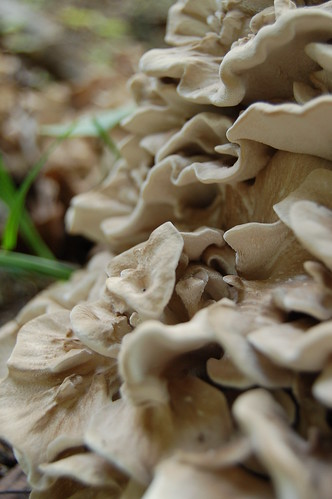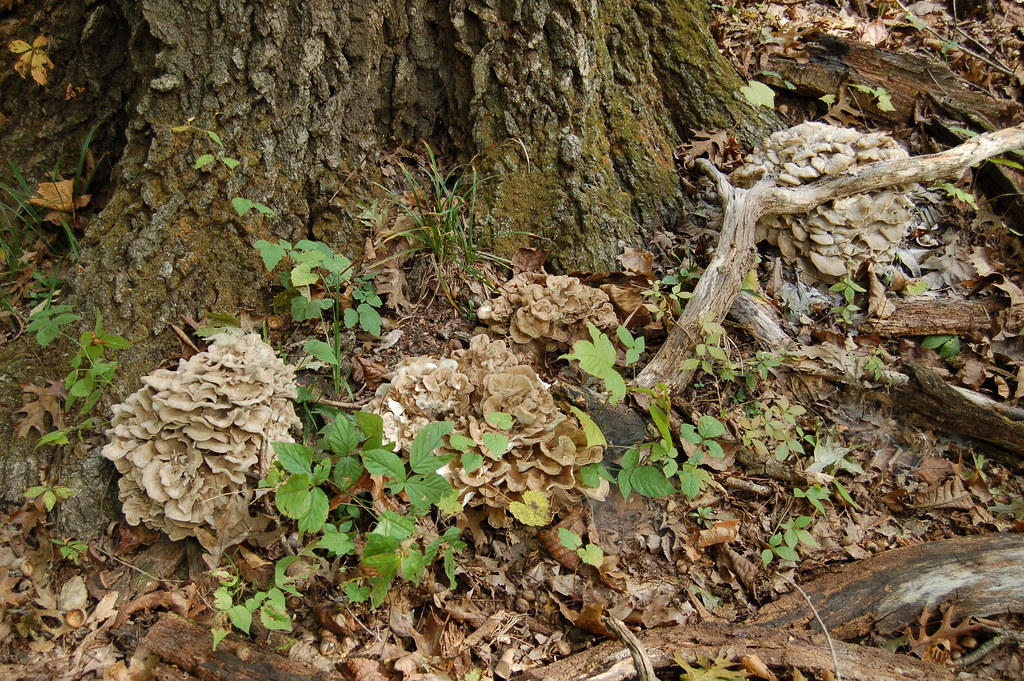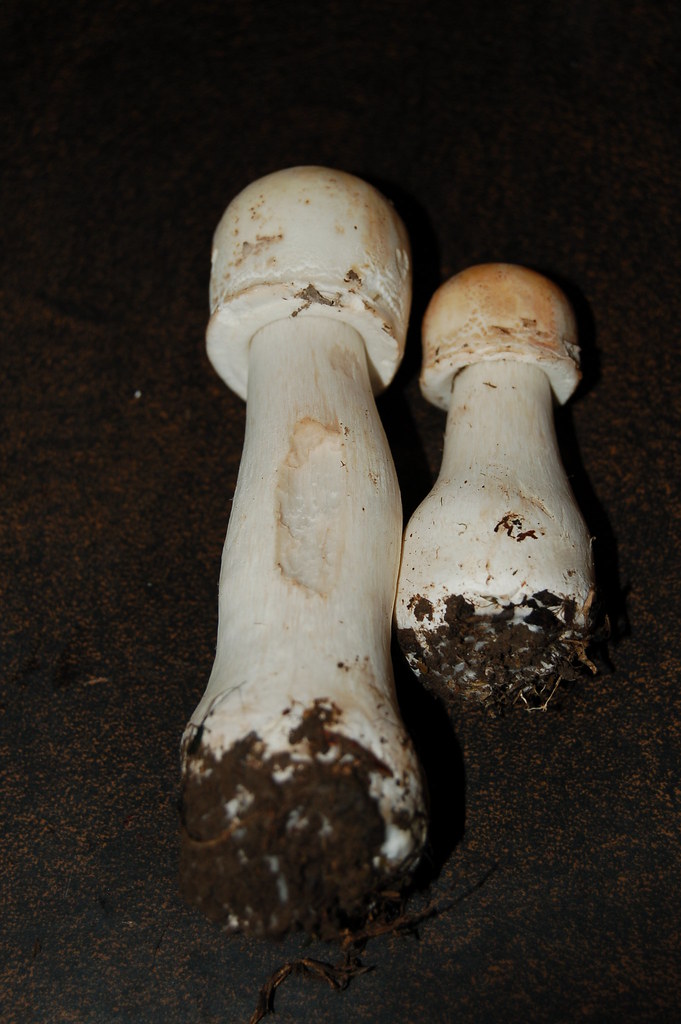Much of my success in spring with morels is due to my knowledge of trees and what I learn each season about how the various species associated with morels are producing that year. The spring trees were fairly easy, at least to me, perhaps due to my passion for finding morels, but come summer and fall I have never paid much attention ,other than that I knew I found hens generally on oak trees.
Well that changed this year. While out meandering for hens with a fellow blog reader and hunter ( that is one of the benefit of having a blog like this, I meet great people and learn a lot from you guys). Anyway, he pointed out a few minor differences that helped me. For example, the most common red oaks have very dark, almost blackish, bark and pointed leaves. So, now when I walk through the woods, I often pay a little more attention to the darker-barked oak trees, than I do the lighter ones. However, if you do this you could be really missing out. Because several red oaks have lighter color bark but a great producers.

Recently, I noticed a trend with a certain red oak that is very easy to identify, the shingle oak. It is the only oak tree in MO that has banana shaped leaves like the ones seen here.
I noticed that although I find a majority of my hens on the more generic looking, dark barked pointed leaf red oaks, because there are a lot more of them, the shingle oaks seem to be much more susceptible to infestation by the hen of the woods mushroom (grifola frondosa).
Don't get me wrong, these trees are fairly rare among the oaks in Mid-MO, but it seems that almost one in three shingle oaks that if find has hens. For example, I found a small section of woods with about 30 some red oaks, six of which were shingle oaks and four of the six had hens. None of the red oaks were infested.
So I am thinking about this when I go to my barber, who has recently been turned on to wild mushrooms and finds hens to be just as good if not better than morels. She had found a tree while walking her dog in town. It was right on the street in a backside part of someone's lot that was overgrown with bush honeysuckle, so there was no chance of fertilizers or pesticides/herbicides. I was excited that she had found a tree, but she kept saying it wasn't on an oak. That was my clue and I said I had to take a look. I had a suspicion it was a shingle.
It was actually just around the block. As I turned the corner my eyes went to the trunks. Lots of nice dark red oaks lines the street. Looking up at the canopy though, only one was a shingle and sure enough that was the tree with several old hens and some harvested stumps.
Another observation that supports my speculation is that I find nice hens on very small shingle oak trees (trunks 10 to 12 inches across). This might suggest that they get infected at an earlier age, since I do not find hens on any other red oaks of that size (except for the Chinkapin Oak).
I mentioned my shingle oak suspicions on the Morel Hunters Board and I several others reaffirmed the relationship between shingles and hens. The I got an email from Camoshroomer this afternoon. It is his photo above of the leaves. The tree was this one.

This photo is one of several trees he found. He said, "four trees of about 15 in the yard had hens, 2 were shingle, the only shingles." That translates to 100% infection rate in that yard for shingle oaks and a 15% rate for the remaining 13 trees.
Now just because I start using numbers, don't think this is by any means scientific. I didn't do any real research to see if mycologists or biologists have documented such an associations. But, when more than one hunter says he has good hen days hunting, the very easy to ID and recognize, shingle oaks, I'd take extra note of it.
Now all this being said about the red oak family, I do have two very old white oaks trees that produce hens pretty steadily, so you can't entirely rule them out either. As with morels, when it comes to hens there are exceptions to every rule.
